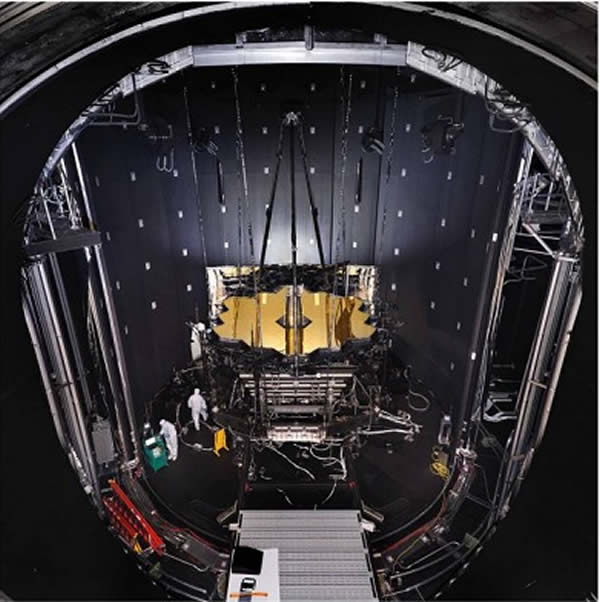
Laser Focus World - October 2017
Minus K negative-stiffness vibration isolators simulate space environment for JWST testing
Posted by Gail Overton
Senior Editor

IMAGE: NASA's James Webb Space Telescope (JWST) is suspended from Minus K vibration isolators on top of Chamber A at NASA's Johnson Space Center in Houston. (Image credit: NASA/Chris Gunn)
The vault-like, 40-foot diameter, 40-ton door of NASA's Johnson Space Center's historic Chamber A sealed shut on July 10, 2017, signaling the beginning of about 100 days of cryogenic testing for NASA's James Webb Space Telescope (JWST) in Houston.
In preparation for JWST cryogenic testing, engineers at Johnson suspended it from the ceiling of the center's Chamber A. This "hammock"--really, six support rods attached to Minus K Technology's (Inglewood, CA) negative-stiffness vibration isolators--is not for relaxation; it's meant to isolate the telescope from the vibrations Chamber A could produce once the door closes and testing begins, as well as from disturbances that might occur outside the chamber.
The telescope needs an arrangement that holds it and its test equipment (an interferometer, autocollimating flat mirrors, and a system of photogrammetry 'precision surveying' cameras already used for tests with a surrogate ‘pathfinder’ telescope) in precise relative alignment inside the chamber while isolated from any sources of vibration, such as the flow of nitrogen and helium inside the shroud plumbing and the rhythmic pulsing of vacuum pumps.
"Remember that the system is designed to work in space, where the disturbances are highly controlled and only come from the spacecraft," said Gary Matthews, an integration and testing engineer at NASA's Goddard Space Flight Center in Greenbelt, MD, who is testing the Webb telescope while it is at Johnson. The JWST is the scientific successor to NASA's Hubble Space Telescope. It will be the most powerful space telescope ever built.